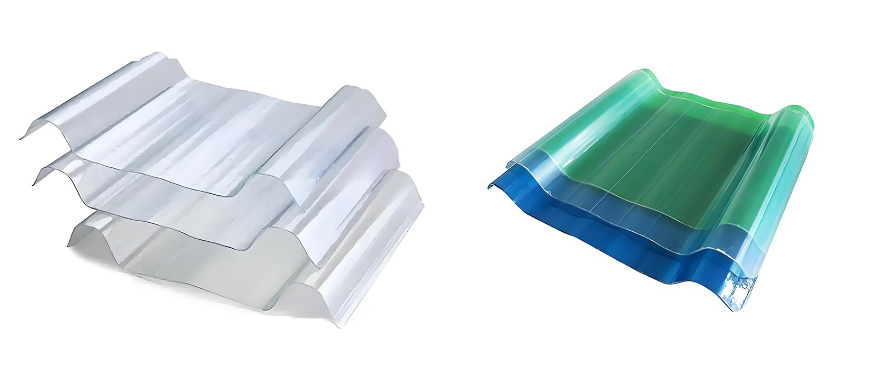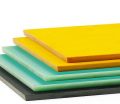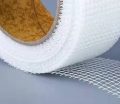
Fiber Reinforced Plastic (FRP) is a composite material consisting of fiberglass reinforcement embedded in a polymer resin matrix, offering a high strength-to-weight ratio, exceptional durability, and resistance to corrosion. These properties make FRP an ideal material for various industries, particularly in construction and manufacturing. In modern construction, FRP is often utilized to enhance the performance of Structural Insulated Panels (SIPs). SIPs are energy-efficient building materials that combine insulation with structural strength. When enhanced with FRP, these panels gain increased strength, improved durability, and a longer lifespan. Fibre reinforced plastic structural insulated panels not only provide superior thermal performance but also contribute to energy efficiency and environmental sustainability in building designs.
What are Fibre Reinforced Plastic Structural Insulated Panels (SIPs)?
Definition and Structure
Fibre reinforced plastic structural insulated panels (FRP SIPs) are a type of advanced building material that combines the strength of fiberglass reinforcement with the insulating properties of foam core materials. These panels consist of an insulating core, typically made from materials like EPS (Expanded Polystyrene), XPS (Extruded Polystyrene), or polyisocyanurate foam, sandwiched between two layers of fibre reinforced plastic. The FRP skin provides structural strength, durability, and resistance to environmental factors, while the foam core offers excellent thermal insulation properties.
The combination of these components creates a high-performance building material that excels in both structural integrity and energy efficiency. The FRP skins protect the insulation from damage, providing a durable outer layer that can withstand harsh conditions, while the core material ensures the panel’s thermal resistance.
Benefits of FRP Structural Insulated Panels
- High Strength-to-Weight Ratio: The FRP skins offer exceptional strength while maintaining a lightweight structure, making the panels easy to handle and install.
- Energy Efficiency: The insulating core reduces heat transfer, improving energy efficiency in buildings and minimizing heating and cooling costs.
- Corrosion Resistance: FRP panels are highly resistant to corrosion, making them ideal for environments with moisture or chemicals.
- Durability: FRP provides a long-lasting, durable surface that can withstand physical stress, weather conditions, and wear over time.
- Design Flexibility: FRP SIPs can be manufactured to various sizes and shapes, providing design flexibility for various building types.
Common Core Materials
The core material in FRP SIPs plays a crucial role in the overall performance of the panel. Some of the most common core materials used include:
- EPS (Expanded Polystyrene): Known for its cost-effectiveness and good thermal performance, EPS is a lightweight, rigid foam that provides reliable insulation for FRP SIPs.
- XPS (Extruded Polystyrene): With a higher compressive strength and better moisture resistance than EPS, XPS is often used in environments where durability and water resistance are important.
- Polyisocyanurate Foam: This foam offers superior thermal resistance, making it an excellent choice for energy-efficient buildings, although it is typically more expensive than EPS or XPS.
These materials work in conjunction with the FRP skins to create a robust and efficient structural system that can be used in both residential and commercial construction. The interaction between the core and FRP skins ensures optimal performance, contributing to the overall strength, insulation, and longevity of the panel.
Where to Buy a Fiberglass Jet Bass Boat for Sale
Applications of FRP Structural Insulated Panels in Fibre Reinforced Plastic Construction
Construction Industry
Fibre reinforced plastic structural insulated panels (FRP SIPs) are increasingly popular in the construction industry due to their superior strength, durability, and energy efficiency. These panels are widely used in the construction of residential, commercial, and industrial buildings, offering versatile solutions for walls, roofs, and floors.
In residential construction, FRP SIPs provide a highly insulated and durable building envelope, reducing energy consumption and enhancing comfort. The panels are easy to install and contribute to faster construction timelines. In commercial buildings, where energy efficiency and long-term durability are key concerns, FRP SIPs offer a cost-effective way to meet both performance and sustainability goals. For industrial buildings, especially those in harsh environments, these panels provide an excellent solution due to their resistance to moisture, chemicals, and physical wear.
The combination of FRP skins and insulating cores makes these panels a reliable choice for meeting modern building standards for energy efficiency and structural integrity.
Specialized Industries
Fibre reinforced plastic structural insulated panels are also used in a variety of specialized industries, where their unique properties make them highly valuable.
- Walk-in coolers and meat lockers: In industries requiring strict temperature control, such as food storage, FRP SIPs provide an outstanding thermal barrier. Their ability to maintain consistent internal temperatures while offering resistance to moisture and bacteria makes them ideal for walk-in coolers, freezers, and meat lockers.
- Chemical labs: The chemical resistance of FRP SIPs ensures they maintain structural integrity in laboratories that deal with corrosive substances. The ability to resist moisture and chemicals enhances the longevity and performance of the building structure, offering a safe and reliable solution.
- Agricultural and medical facilities: In the agricultural industry, FRP SIPs are used to build durable and insulated structures, such as barns or processing plants. These panels help control temperature and humidity, crucial for both livestock and food production. Similarly, in medical facilities, FRP SIPs are employed to create clean, energy-efficient environments that meet stringent health and safety standards. Their ability to resist impact and remain easy to clean makes them ideal for such applications.
These diverse applications of FRP structural insulated panels illustrate their versatility and efficiency across different sectors, providing both structural strength and energy-saving benefits.
Why Fiberglass Jon Boat to Bass Boat Conversions Are Popular
Advantages of Fiber Reinforced Plastic (FRP) in Fibre Reinforced Plastic Structural Insulated Panels
Strength and Durability
One of the primary advantages of fibre reinforced plastic structural insulated panels (FRP SIPs) is their exceptional strength and durability. FRP enhances the structural integrity of SIPs by reinforcing the panels with fiberglass, which increases their overall strength. In fact, FRP SIPs are up to 7 times stronger than traditional timber-frame structures. This makes them an ideal choice for both residential and commercial buildings, where durability and load-bearing capacity are essential.
Additionally, FRP SIPs are resistant to extreme weather conditions, including high winds, heavy rain, and snow loads, offering long-term reliability in harsh environments. The material’s ability to withstand impact and physical stress further enhances its effectiveness, making it suitable for areas prone to natural disasters such as earthquakes or hurricanes.
Energy Efficiency
Fibre reinforced plastic structural insulated panels significantly contribute to energy efficiency in construction. The foam core used in these panels acts as a continuous insulation layer, providing superior thermal resistance. This helps to regulate temperature within the building and keeps energy consumption low, resulting in reduced heating and cooling costs.
Moreover, the airtight construction provided by the FRP panels ensures that the building remains tightly sealed. This reduces the risk of drafts and heat loss, further improving the energy performance of the structure. With growing concerns over energy conservation and sustainability, FRP SIPs offer a highly effective solution for reducing energy costs while maintaining comfort.
Corrosion and Chemical Resistance
The corrosion and chemical resistance of FRP make it a standout material for use in specialized industries. In environments where buildings are exposed to harsh chemicals, moisture, or other corrosive substances, FRP SIPs provide an added layer of protection.
This resistance makes them an ideal choice for industries such as chemical plants, food processing facilities, and medical labs, where safety and cleanliness are paramount. The long lifespan of FRP SIPs ensures that the panels maintain their strength and functionality even in challenging environments, offering a low-maintenance solution for these specialized applications.
The combination of strength, energy efficiency, and resilience to corrosion positions fibre reinforced plastic structural insulated panels as a highly versatile material for modern construction.
The First Fiberglass Bass Boat and Its Revolutionary Design
Key Considerations for Installing Fibre Reinforced Plastic Structural Insulated Panels
Installation Process and Techniques
Installing fibre reinforced plastic structural insulated panels (FRP SIPs) requires careful planning and precise execution to ensure the panels perform optimally. The process typically begins with pre-fabrication, where the FRP SIPs are manufactured in controlled factory settings. These panels are cut to size and can be customized to meet specific design requirements.
Once on-site, the installation of FRP SIPs involves assembling the panels, which are connected using specialized fasteners and adhesives to create a continuous, airtight, and structurally sound building envelope. Proper sealing is critical to ensure that the panels are tightly secured and provide the highest level of energy efficiency. This includes sealing joints between panels to prevent air leaks and potential moisture infiltration, which could affect the panel’s performance.
The maintenance of FRP SIPs is relatively straightforward. Since they are resistant to moisture, pests, and wear, regular inspections are recommended to check for any damage or structural issues. Repairs usually involve replacing damaged sections, resealing joints, or cleaning the surface to maintain optimal performance.
Cost Factors
The cost of installing fibre reinforced plastic structural insulated panels can vary based on several factors. The price of materials is a key consideration, with FRP SIPs being more expensive upfront than traditional materials due to their advanced properties and manufacturing process. However, the long-term savings from their superior energy efficiency can offset the higher initial investment.
Additional costs include installation labor, which is typically higher for FRP SIPs due to the precision required during the installation process. However, the time-saving benefits of using pre-fabricated panels—since they can be installed faster than conventional building materials—can reduce overall labor costs.
It is also important to factor in long-term savings that result from lower heating and cooling costs. The energy efficiency provided by the continuous insulation of FRP SIPs helps reduce utility bills over time, making them a cost-effective option for energy-conscious builders and homeowners. The durability and minimal maintenance requirements of FRP SIPs further add to their cost-effectiveness by ensuring long-lasting performance with fewer repairs needed throughout the lifespan of the building.
While the initial investment in fibre reinforced plastic structural insulated panels may be higher compared to traditional materials, their energy efficiency, durability, and reduced maintenance needs make them a valuable long-term investment for both residential and commercial construction.
Case Studies and Real-World Examples of Fibre Reinforced Plastic Structural Insulated Panels
Successful Applications of FRP SIPs in Construction
Fibre reinforced plastic structural insulated panels (FRP SIPs) have been successfully used in a variety of construction projects, showcasing their versatility, energy efficiency, and durability. One notable example is a residential project in a coastal region where the harsh saltwater environment posed a significant challenge to building materials. By using FibreTech’s fiberglass panels, the building not only achieved superior energy efficiency through the continuous insulation provided by the FRP SIPs but also gained resistance to corrosion. The panels’ lightweight yet strong properties made the construction process faster and less labor-intensive, reducing overall project costs.
Another successful case is the use of Glasbord panels in a commercial warehouse located in a high-humidity area. The panels’ moisture resistance and ability to maintain structural integrity under extreme environmental conditions helped the warehouse stay operational without the need for constant maintenance. Over the course of several years, the long-term performance of the FRP SIPs exceeded expectations, with no significant degradation of the panels, even in the humid environment. This demonstrated the robustness of the panels, especially in settings where traditional materials might have failed or required frequent repairs.
These real-world examples highlight the adaptability of fibre reinforced plastic structural insulated panels in a variety of climates and industries. Whether for residential or commercial applications, FRP SIPs offer enhanced energy efficiency, corrosion resistance, and strength, making them a reliable choice for modern construction.
Challenges and Lessons Learned
While FRP SIPs offer numerous advantages, there are also challenges associated with their use in real-world applications. One common issue is moisture management. Despite their inherent moisture resistance, improper installation or sealing can lead to moisture infiltration at panel joints, which could compromise insulation performance. In one commercial facility, this issue was identified early, and corrective measures included resealing joints with high-performance sealants designed specifically for FRP materials. This ensured continued performance and durability in the high-humidity environment.
Another challenge is installation complexity. While pre-fabricated FRP SIPs are easier to install than traditional materials, they still require a high level of precision to ensure proper fitting and sealing. Contractors involved in a construction project using FRP SIPs reported that they needed specialized training to handle the unique installation requirements. To mitigate this, project managers invested in training programs for their teams, which ultimately helped streamline the installation process and reduce errors.
Cost is another factor that needs consideration. While FRP SIPs provide long-term savings through energy efficiency, their upfront cost can be higher than traditional building materials. One building project found that while the initial investment was substantial, the savings from reduced energy consumption and minimal maintenance offset the initial costs over time. Additionally, the long-term durability of the panels ensured that the building would not require costly repairs or replacements in the future.
Overall, the lessons learned from these real-world cases emphasize the importance of proper installation, regular maintenance, and considering long-term costs when using fibre reinforced plastic structural insulated panels. By addressing potential challenges proactively, builders can ensure that the benefits of using FRP SIPs outweigh any initial hurdles.
FAQs about Fibre Reinforced Plastic Structural Insulated Panels
One notable disadvantage of using structural insulated panels (SIPs) is the initial cost. While SIPs offer excellent long-term energy savings and durability, their upfront cost can be significantly higher compared to traditional building materials, such as timber or standard insulation boards. This higher cost is due to the manufacturing process, where high-quality foam insulation is sandwiched between strong panels, often made from materials like fibre reinforced plastic (FRP). In addition to the material cost, there can also be additional costs associated with specialized labor for installation. For some construction projects, the cost-effectiveness of SIPs might not be immediately apparent, especially if the building is a smaller-scale project. However, while the initial price may be a concern, it’s important to remember that SIPs can result in energy savings, long-term durability, and lower maintenance costs, which may offset the higher initial expenditure over time.
Fibre reinforced plastic (FRP) is considered relatively expensive due to several factors related to its production process and material properties. First, raw materials for FRP, such as high-quality fiberglass and specialized polymer resins, are costly. The manufacturing of FRP involves combining these materials with specific manufacturing techniques like lamination, which adds to the production costs. Moreover, advanced manufacturing processes that ensure the material’s high strength-to-weight ratio and durability contribute to the overall price. Additionally, FRP’s ability to resist corrosion, impact, and extreme weather conditions makes it a premium product suitable for specialized applications, such as in the construction and marine industries. This further drives up the price as it is used in high-performance environments. Furthermore, the maintenance-free nature of FRP and its long-lasting properties justify its cost, particularly in applications where durability and performance are crucial.
The R value of FRP (fibre reinforced plastic) panels can vary based on the core material used and the specific type of insulation incorporated in the panel. Generally, FRP panels with an insulating core—such as EPS (Expanded Polystyrene) or XPS (Extruded Polystyrene)—can provide an R value between 4.0 and 6.0 per inch of thickness. R value is a measure of thermal resistance, which indicates how well a material resists the transfer of heat. The higher the R value, the better the material insulates. FRP panels, due to their rigid foam cores, offer excellent thermal insulation, making them suitable for energy-efficient buildings. These panels are especially effective at minimizing heat loss or gain, contributing to the overall energy efficiency of a structure. When combined with FRP skins, these panels not only provide thermal insulation but also improve structural strength and moisture resistance, making them an ideal choice for a wide range of construction applications.
The life expectancy of structural insulated panels (SIPs) depends on various factors, including the quality of materials, installation, and the specific environmental conditions in which the panels are used. On average, SIPs can last between 50 to 100 years if installed and maintained properly. The insulating core, typically made from EPS, XPS, or polyisocyanurate foam, is designed to maintain its integrity over decades without significant degradation. The FRP skins or other outer layers provide additional protection against the elements, ensuring the panels are resistant to moisture, corrosion, and physical wear. The life expectancy may be shorter if the panels are exposed to extreme conditions such as high humidity or severe physical impact without proper maintenance. However, regular inspection and maintenance can significantly extend the life of SIPs. In comparison to traditional building materials, SIPs have an impressive lifespan, offering long-term energy efficiency and structural stability that is often unmatched by other systems.

As the editor of GangLong Fiberglass, I have years of experience and in-depth research, focusing on cable tray products, fiberglass solutions, and grille systems. I incorporate years of industry insights and practical experience into every content, committed to promoting the progress of the industry. At GangLong Fiberglass, my commitment is reflected in every product, from innovative cable trays to durable fiberglass solutions and sturdy grille systems. As an authoritative voice in the industry, my goal is to provide valuable information to professionals and businesses and promote forward-looking solutions.


